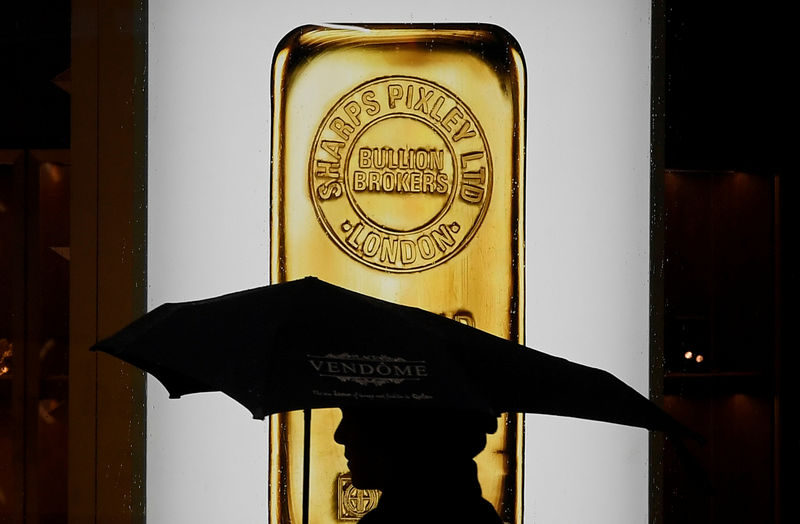Commodities
Gold prices struggle before inflation, Fed cues; copper set for strong week


© Reuters.
Investing.com– Gold prices kept to a tight range on Friday and were headed for a second straight week in red as anticipation of more cues on U.S. interest rates kept traders skittish, with key inflation data and a Federal Reserve meeting now in focus.
On the other hand, copper prices were headed for a strong weekly performance after top importer China rolled out more stimulus measures, driving up hopes that demand for the red metal will remain strong.
China’s stimulus measures saw some improvement in risk appetite which, coupled with a series of record highs on Wall Street, further dented demand for gold.
Strength in the dollar- following stronger-than-expected data- also weighed on bullion prices, keeping them firmly within a $2,000- $2,050 trading range established over the past week.
steadied at $2,021.41 an ounce, while expiring in February rose 0.2% to $2,021.10 an ounce by 23:46 ET (04:46 GMT). Both instruments were down about 0.3% this week.
Still, bigger losses in the yellow metal were held back by some safe haven demand, as the Israel-Hamas war and a growing conflict in the Middle East worsened.
PCE inflation, Fed meeting in focus
Markets were now awaiting fresh cues on U.S. monetary policy, starting with data- the Fed’s preferred inflation gauge- due later on Friday. The reading is expected to reiterate that inflation remained stubborn in December.
Sticky inflation, coupled with increasing signs of resilience in the U.S. economy, give the Fed more headroom to keep rates higher for longer. This notion is expected to limit any major upside in gold over the coming months.
The Fed is set to meet next week, and is widely expected to . Markets were also seen pricing in a hold by the central bank during its March meeting, flipping earlier expectations for a 25 basis-point cut.
A higher-for-longer outlook for U.S. rates bodes poorly for gold prices, given high rates push up the opportunity cost of investing in the yellow metal.
Copper prices ease but set for strong week on China optimism
expiring in March fell 0.2% to $3.8617 a pound, but were set to add over 2% this week after racing to three-week highs.
Gains in copper were fueled chiefly by more monetary stimulus in top importer China, which helped quell concerns over a looming slowdown in demand.
But analysts still questioned just how much economic support more monetary stimulus will provide, given that China was grappling with a severe slowdown in consumer and business spending. A post-COVID economic rebound also failed to materialize in 2023, and kept sentiment towards China largely negative.
Focus now turns to upcoming data from the country, due next week, for more cues on the economy.
Upgrade your investing with our groundbreaking, AI-powered InvestingPro+ stock picks. Use coupon INVPRO2024 to avail a limited time discount on our Pro and Pro+ subscription plans. Click here to know more, and don’t forget to use the discount code when checking out!
Commodities
Oil prices rise; U.S. crude inventories plunge, Russia-Ukraine truce eyed
Commodities
India’s Reliance to stop buying Venezuelan oil over US tariffs, sources say
Commodities
Oil prices climb on Venezuela supply worries

 Forex3 years ago
Forex3 years agoForex Today: the dollar is gaining strength amid gloomy sentiment at the start of the Fed’s week

 Forex3 years ago
Forex3 years agoUnbiased review of Pocket Option broker

 Forex3 years ago
Forex3 years agoDollar to pound sterling exchange rate today: Pound plummeted to its lowest since 1985

 Forex3 years ago
Forex3 years agoHow is the Australian dollar doing today?

 Cryptocurrency3 years ago
Cryptocurrency3 years agoWhat happened in the crypto market – current events today

 World3 years ago
World3 years agoWhy are modern video games an art form?

 Commodities3 years ago
Commodities3 years agoCopper continues to fall in price on expectations of lower demand in China

 Economy3 years ago
Economy3 years agoCrude oil tankers double in price due to EU anti-Russian sanctions























